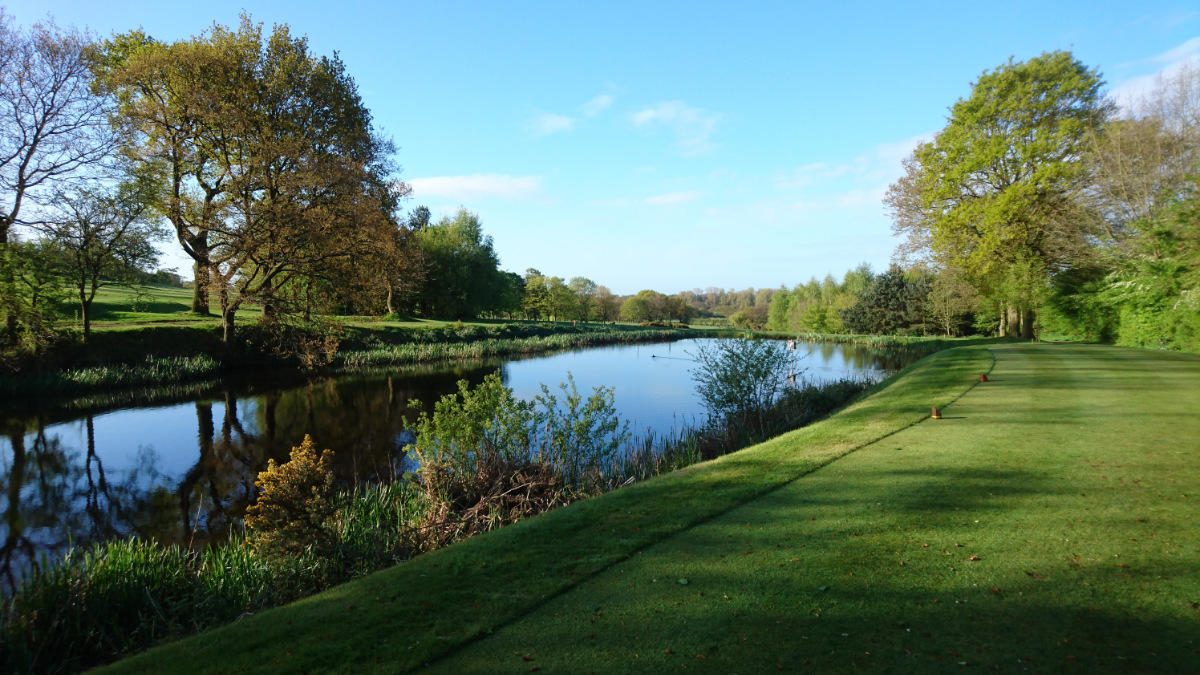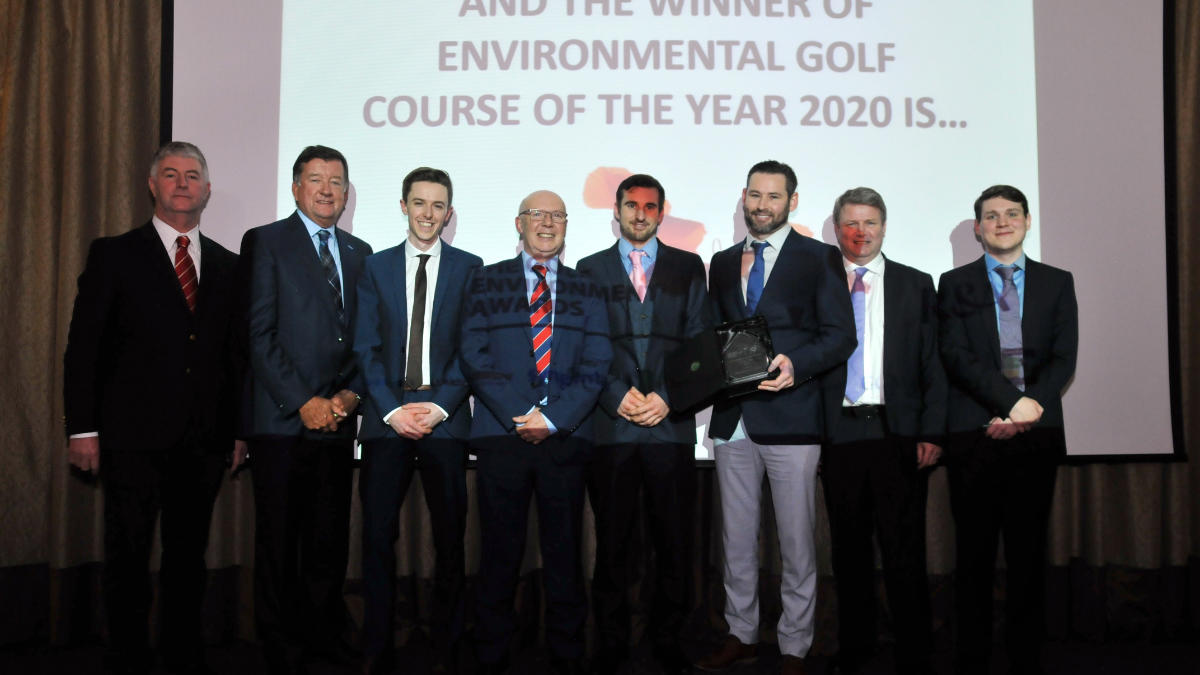- Homepage
- News and Features
- How a touch of creativity is bringing extra revenue to Warrington Golf Club
How a touch of creativity is bringing extra revenue to Warrington Golf Club

A part of my role at BIGGA is to develop features for Greenkeeper International.
When developing them about a golf club, I will spend time on their website, hoping to come across something of interest from a sustainability perspective. And so I was hugely pleased to find that Warrington Golf Club’s website is littered with interesting eco stuff, including snaps of the course, the ponds and its woodlands.
As you’ll be aware, golf clubs don’t often celebrate their achievements in this way and so, ahead of my visit, it was looking like a good start – and things only got better.
Warrington is one of those venues that has many different characteristics, including parkland, woodland, heathland and numerous aquatic areas to go along with the scenic views around the top parts of the course. On a clear day, you can see most of Manchester, Cheshire and beyond.
The team has a passionate and forward‑thinking chap called John McLoughlin at the helm, leading a crew of eight. You’re probably wondering why I’m writing about Warrington though?
Well, the team took the overall winning position in this year’s STRI Golf Environment Awards, so they know a thing or two about ecology and sustainability.
John said: “We have been finalists in the awards a couple of times, but this year, given the culmination of the past few years’ ecology work, we peaked!”

That culmination John speaks of includes eco‑piles, nest box projects and setting up a composting programme.
However, last year also saw them concentrating on the site as a whole, including water management, recycling clubhouse waste and energy usage that set the facility apart from the rest.
Along with this, WGC receives £400 per year from a clothes recycling scheme, where the recycled items are sent to places more in need than Cheshire.
About the aforementioned composting: the team creates approximately 60 tons of usable material per year from their excellent green waste recycling initiative. Leaves, grass clippings and many other minerals, such as sands and soils, find their way to the composting programme.
This is subsequently returned to the course, either beneath larger earth moving projects or to the sides of pathways prior to expensive rootzone being brought in.
This reduces the overall amount of haulage, which is approximately £30 per tonne in the North West. John mentioned that a saving of £3,500 per year can be made from this holistic project.
Additionally, food waste goes through the on-site wormery – now that’s just fab! To add to the growing list of goodies, the team has a herb garden, which the club chefs utilise, while a collection of beehives for honey is located next to a wildflower zone.
I’m swiftly running out of superlatives for Warrington and its team!

John suggested that the agronomy department is a whisker away from sending zero waste to landfill, with the clubhouse not far behind.
Plans are also in place to feed the clubhouse’s water from a borehole, reducing the water bill by a whole bunch. The course’s irrigation already comes from one of the ponds and with the UK’s ground water regulations already quite tight where golf is concerned, Warrington is well placed to survive if the water companies decide to turn the taps off.
The club also has an agreement that nets them (forgive the pun) around £800 per year in pond rent from a local fishery expert.
The way this works is, the expert adds fish to Warrington’s lakes, the fish then feed on the vegetation, algae and pond life and then, over time, begin to breed.
These fish are taken to other ponds when they get too large or plentiful for Warrington’s, but it means the ponds are cleansed naturally by this method, keeping man hours to a minimum. John explained how the water consultant tests the pH and water quality, then offers advice on the best way to manage the pond fringes – a hugely sustainable project in my eyes!
The organic parts of the golf course appear to be taken care of, but what about the non‑organic and less recyclable areas? Take a peek at this for forward thinking machinery management:
- Lithium battery powered hand tools
- Battery powered hand mowers
- Hybrid triple mowers
- All cylinder mowers maintain a contactless cut which ensures superior plant health following mowing
- Operate an electric utility vehicle which minimizes petrol usage
- Introduced an automated mower around the maintenance facility in partnership with Stihl
- I know the lithium has to come from somewhere i.e. out of the ground at great environmental costs, but until engines come along that use either water or air to run on then we have little option but to use rechargeable batteries.
With that in mind, great initiatives all!
Warrington has an eco‑team in place to help with the smaller, but just as important, environmental tasks. These tasks are Himalayan Balsam eradication, bird and owl box projects, a woodland ecology trial area, an insect and hedgehog hotel development and wildflower management.
While there aren’t any veteran or ancient trees onsite, the team does leave decaying timber standing for the all‑important saprophytic organisms (beetles, grubs and any other wood dwelling critter) which want to use it.
I know there are tree creepers, nuthatches and woodpeckers on the course and I know that the population of these beautiful birds will rise given the fact the team are careful about woodland management. In fact, those of you who attended BIGGA’s ecology conference at BTME 2019 will remember the obscenely professional Andy Riley. Andy is an arboriculture specialist who now plies his trade at Warrington as their eco expert greenkeeper – what Andy doesn’t know about woodland management isn’t worth knowing, I reckon.
But do you know what? At Warrington I’m not seeing anything that other courses could not do. It’s just that the greenies here have taken it to the next level and made it cost effective or, more importantly, the projects actually bring cash in to the club. This is surely what sustainable practices are all about.
I’m certainly not suggesting that Warrington are the only club in the land who does this kind of thing (I could probably name hundreds), but I am suggesting that they have built this thing up from nothing much at all and, as a result, have been recognised as the best in the UK at what they do.
Here’s what Rowan Rumball, STRI Ecologist, had to say about it all when presenting the Warrington team with their well‑deserved award: “If you are looking for a golf course that has consistently shown innovative and direct solutions to reducing damaging environmental practices then Warrington is the cream of the crop. Warrington has shown me a course that is sustainable in relation to inputs, environmental impacts, water usage and ecologically diverse. They are well deserving of this award.”
Enough said really, so well done to John and his team on hopefully inspiring countless greenkeepers elsewhere to consider new and innovative approaches that can save (or even make) golf courses a substantial amount of money.
Continue the conversation: James Hutchinson; John McLoughlin; Warrington Golf Club; Golf Environment Awards
John McLoughlin is a BIGGA member and this article was originally featured in Greenkeeper International, the monthly journal of BIGGA.
Author

James Hutchinson
James Hutchinson is BIGGA’s Ecology and Sustainability expert. With over 30 years greenkeeping and ecology experience, including two years at St Andrews Links Trust as their Environmental Officer, he is well placed to offer guidance and advice to BIGGA members
